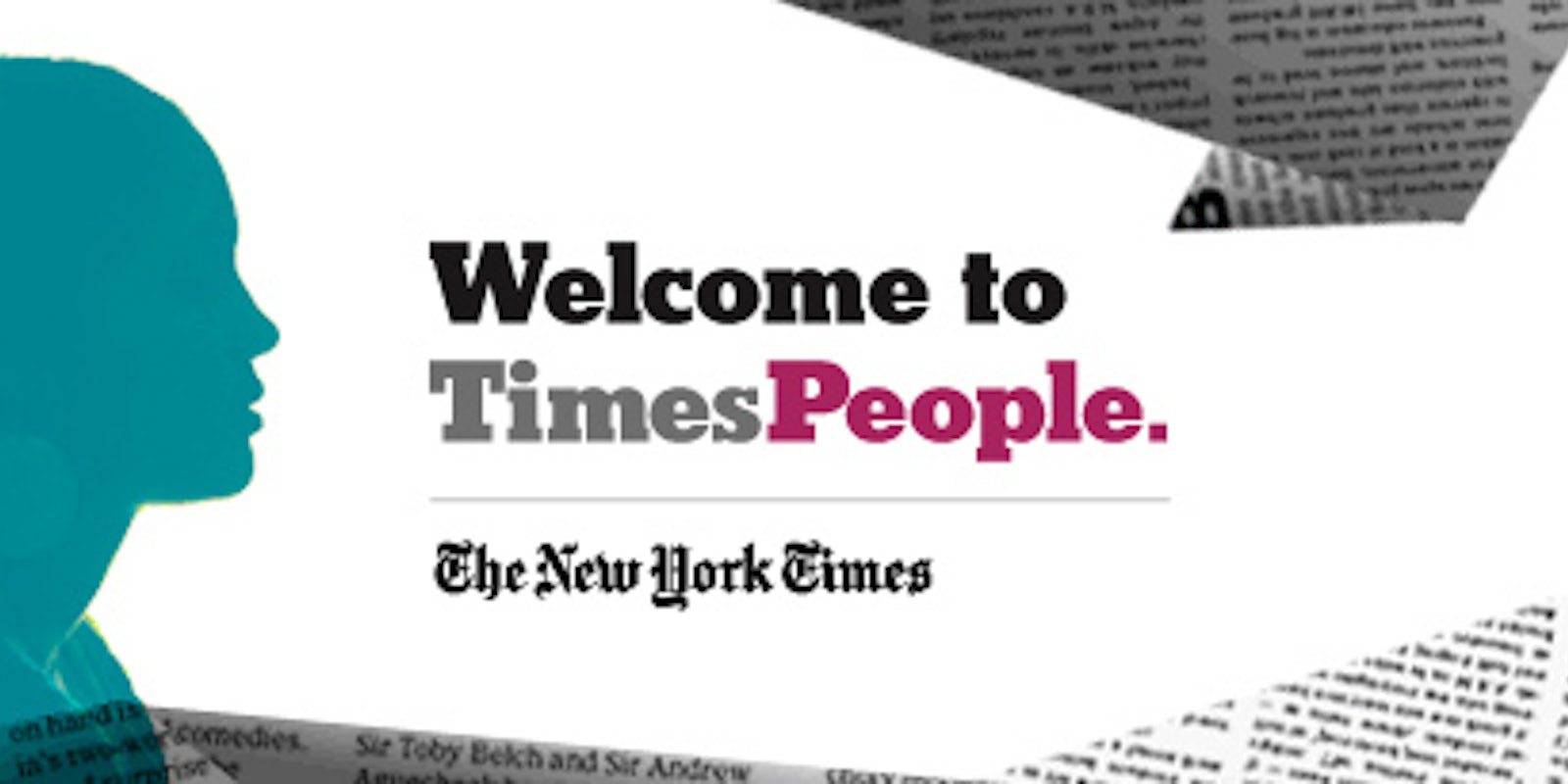The New York Times has quietly pulled the plug on TimesPeople, a social network launched in 2008 that allowed readers to connect with one another and recommend articles and share comments.
“We apologize for the inconvenience, however, we are no longer supporting TimesPeople and are in the process of fully removing it from NYTimes.com,” wrote Andrew Smith, a New York Times customer service representative, in an email to Stowe Boyd, the blogger who first reported the discontinuation of the service on Tuesday.
The end of TimesPeople comes just two months after Jill Abramson took over as the newspaper’s executive editor. Abramson spent the year before her appointment immersed in the paper’s digital operations as managing editor and has widely been seen as the leader of the venerable print publication’s expansion into digital media.
After her appointment to the executive editor position, Times insiders showered her with praise on Twitter.
At the time, Jennifer Preston, former Times social media editor, tweeted, “For all of you wondering about Jill Abramson and the Web? Jill gets it. And she’s fearless. We’re lucky.” She later added, “Jill has always been highly supportive of our real-time Twitter publishing/curation efforts.”
At the time, however, Abramson had not started her own Twitter account. (She now has one.)
Abramson did not respond to an email request for comment Wednesday morning. Even as Smith said the feature was being removed from the website, a Google search for “TimesPeople” turned up a page on the site urging readers to “join TimesPeople.”
In his blog post, Boyd said he had more than 1,000 followers on TimesPeople. He could no longer access his posts, contacts, and other data.
“By the way, major news services. If you launch something like this to great fanfare (or even small fanfare) it makes sense to make some noise when you shut the service down, tell people why, share the stats, and the thinking about your decision,” Boyd said in a post that was quickly shared by journalists and readers on Twitter.
“[whispers] I see #timespeople,” said Don Van Natta Jr., a Times investigative reporter, in retweeting Boyd’s post. He apparently rethought his allusion to the line “I see dead people” from the 199 film “The Sixth Sense,” since his tweet, archived on Muckrack, appears to have been deleted from his Twitter stream.
“Lame, I liked it,” tweeted Reuters social media editor Anthony De Rosa.
Other former TimesPeople members echoed Boyd’s questions about what would become of their data, posts and contacts.
William Hartnett provided another viewpoint, however: “I read nearly 400 stories a month on nytimes.com, and have no idea what TimesPeople is. Was.”
It was not clear how many users TimesPeople had. The service allowed users to comment on and rate articles while seeing what other users were reading and sharing.
Abramson, who joined Twitter after being named executive editor, has said she wanted to offer incentives to staffers that use digital media.
“When you have a front-page story,” she said earlier this year to New York magazine, “everyone is like, ‘Wow, great story!’ I’d like to get to a place where the celebration when something goes on the home page is as pronounced.”
TimesPeople was launched in June 2008, first as a Firefox extension and later as part of the website for registered users that required no download.
From the outset, the New York Times stressed it was not trying to compete with existing social networks and limited user profiles to location, user name and user icons in a bid to stay focused on remaining an information source.
However, users increasingly use social networks like Facebook and Twitter to share all kinds of media, and it’s not clear why they would limit themselves to a service hosted by a single publication.
Clarification: The Times has clarified its future plans for Times People since publication of this story, telling the Poynter Institute that last week’s move simply removes the Times People toolbar from the Web site and that the newspaper has plans to expand the social networking-like service this
